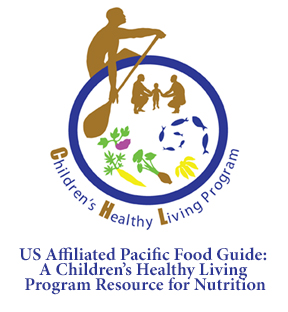
USDA Guidelines
United States Department of Agriculture (USDA) Guidelines

“MyPlate” is a visual cue for healthy eating and is the current food guidance in the United States (US). The different colors and sections indicate the different food groups that you should have in your diet on a daily basis in a meal. MyPlate is based off of the 2010 Dietary Guidelines for Americans, which offers advice on making healthy food choices that promote health and reduce disease for healthy individuals aged 2 years and up. It provides “the scientific and policy bases for all Federal nutrition programs, including research, education, nutrition assistance, labeling, and nutrition marketing.”
Grains: foods make from wheat, rice, cornmeal, barley or any other cereal grain
- Provide fiber, thiamin, riboflavin, niacin, folate, iron, magnesium, selenium
- 1 oz eq = 1 slice bread, 1 cup cereal, ½ cup cooked rice; recommend 6-8 oz eq/d
- Key consumer message: Make at least half of your grains whole grains.
Protein: foods made from meat/poultry, seafood, beans and peas, eggs, nuts and seeds
- 1 oz eq = 1 oz meat, ¼ cup cooked beans, 1 egg, 1 Tbsp peanut butter, ½ oz nuts or seeds; recommend 5.5 – 6 oz eq/d
- Provide protein, thiamin, riboflavin, niacin, vitamin B6, vitamin E, iron, zinc, magnesium
- Selection tips: lean, low sodium, at least 8 oz of cooked seafood/week
Fruits: edible parts of plants
- Contain seeds and pulpy surrounding tissue
- Have a sweet or tart taste
- Generally consumed as beverages, breakfast and lunch side-dishes, snacks or desserts
- 1 cup = 1 cup fruit or juice, ½ cup dried fruit; recommend 1.5 – 2 c/d
- Provide fiber, potassium, folate, and vitamin C
Vegetables: edible parts of plants
- Includes stems and stalks, roots, tubers, bulbs, leaves, flowers and fruits, seaweeds, corn and sometimes mushrooms
- Generally consumed raw or cookd with a main dish, in a mixed dish, as an appetizer or in a salad
- 1 cup = 1 cup raw/cooked veg. or juice, 2 cups leafy greens; recommend 2.5 – 3 cup/d
- Provide fiber, potassium, folate, vitamin A, vitamin C
We will use the culinary definition of F/V which refers to how the plant is prepared and eaten, as opposed to the botanical definition.
Source: IAR Prevention & World Health Organization, (2003). IARC Handbooks of Cancer Prevention – Fruits and Vegetables. France, IARC Press.
Dairy: fluid milk and foods made from milk
- 1 cup = 1 cup of milk, yogurt or soymilk, 1.5 – 2 oz cheese; recommend 3 cup/d
- Provide calcium, potassium, vitamin D and protein
- Key consumer message: Switch to fat-free or low-fat (1%) milk


